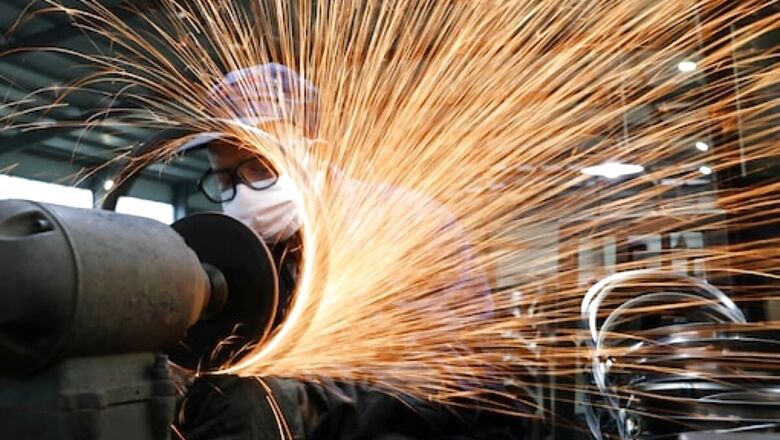
views
This Cabinet reshuffle was huge and the timing was appropriate. It came after 15 months of COVID that hurt India and Indians. During this period, many have been pushed into poverty, many have lost jobs and their purchasing power. Lockdown saved lives, but devastated the economy. Now, in the next three years, there is a need for a robust economy that can grow at 8-9 per cent, create massive jobs, increase the income of citizens, boost consumption and give people hope. This means the Narendra Modi government has to push the economic agenda in a very big way.
Capital expenditure is rising across corporate India, tax collections too are up and these are good portents. The cabinet has to stay focused on ensuring economic growth, jobs, a rise in income and an improvement in overall quality of life, over the next three years.
The first five years of the Narendra Modi government were focused on the social sector and undertaking deep structural reforms. Many of the these reforms caused substantial pain—the ancient regime saw its demise, crony capitalism was pushed aside, Indian industry and business were forced to transform rapidly which hurt several sectors—but it was needed.
Now, for the next five years, we needed a period of stability but COVID intervened. The cabinet expansion has ensured representation of women and backward castes and the professional qualification of most ministers is impressive. The focus of this exercise, however, seems to be political because only political people within the BJP and its allies have been made ministers. There are no technocrats from outside.
Get Cracking on Unfinished Agenda
Nevertheless, it is a big development that will hopefully transform India in the next three years. The Prime Minister must now assign KPIs to all the ministers and their ministries and monitor their performance every quarter to make sure things move forward. We cannot afford to not grow at 8-9 per cent.
The list of unfinished agenda is long. The labour reform laws, for instance, have been passed by Parliament, but still not implemented. Tax reforms are pending and have been dealt in a piecemeal fashion, so far. Similarly, infrastructure sector also needs reforms despite growth. Divestment has been sporadic in India and the pace needs to be accelerated. While India has a huge forex reserve of over $609 billion, Indian businesses and citizens still suffer from the control regime of the FERA (Foreign Exchange Regulation Act) despite FEMA (Foreign Exchange Management Act) coming into effect two decades ago. The Reserve Bank of India continues to force citizens to come to it for several approvals and very often doesn’t even reply to them.
Clearly, we need to cut down bureaucracy’s impact on businesses and society to ensure the government delivers the goods. Maybe Prime Minister Modi should abolish several control-oriented departments, uproot those who still control. A control regime functions as an approval regime.
One of the biggest challenges for the NDA government will be to push deep economic reforms when many Opposition-ruled states are determined to oppose them. One way out is to ensure the BJP governments in states like Uttar Pradesh, Madhya Pradesh and Karnataka implement these reforms and become model states. UP has done that but Karnataka is way behind and has fallen back by at least five years despite being a developed state. It has not undertaken the kind of reforms that are required to truly become a knowledge state, despite enjoying many natural advantages. Infrastructure in Bengaluru, dubbed the city of the future, remains poor despite much talk.
There is a need for greater investment and better coordination between the NDA government in Delhi and the BJP/NDA governments in states to ensure these states are transformed. That’s because growth in the future will come from the states, not the Centre. For instance, if Bihar and Uttar Pradesh with a combined population of approx. 350 million people were to grow faster than the rest of the country, India will surely see massive change.
Plug the Gap
I feel one of the issues we face is the gap between what is required on the ground for businesses and citizens and what the government can do. One way out was to have more people from civil society and businesses in the government, which has not happened. The other way could be to involve accomplished citizens in advising the government on key reforms that are required.
This gap has to be plugged because a government cannot appear distant and dictating citizens all the time. In a democracy, the government has to be of the people, by the people and for the people. It has to reflect people’s needs and has to solve their problems. Something as basic as buying a property or a piece of land remains difficult because of high levels of corruption and lack of reforms.
Several sectors require reforms and the cabinet reshuffle is a step in the right direction. Hopefully, it would lead to decisions that accelerate growth, create more jobs and improve the quality of life in the next three years. The next three years are the real test in the 10 years of NDA rule.
Read all the Latest News, Breaking News and Coronavirus News here.


















Comments
0 comment